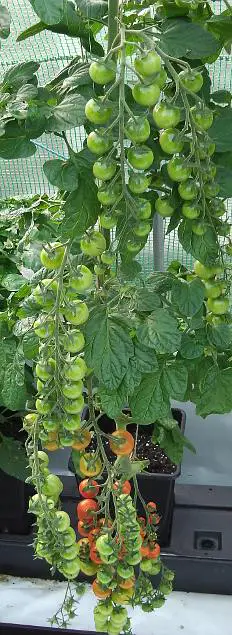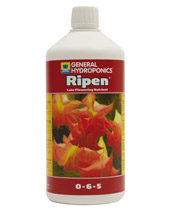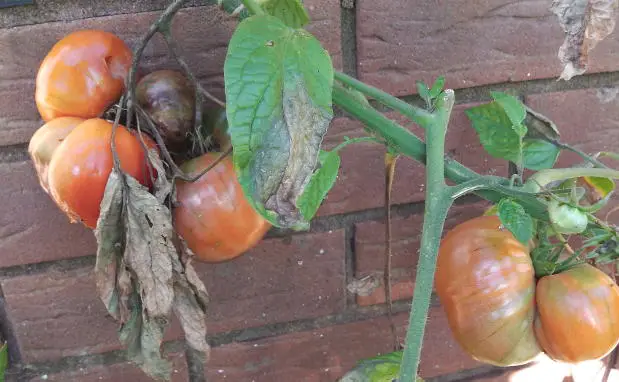It looks like the hot, dry period is over and the wet and breezy spell has arrived here in the UK.
It will certainly give the blight resistant plants a “run for their money” and see just how blight resistant they are!
I think next season I’ll grow more salad items such as:
- Loose leaf lettuce – very easy to grow
- Cucumbers – the mini varieties are easy and prolific – can be pickled (gerkins) too.
- Spring Onions – fine soil and sow at the right time
- Sweet Peppers – the smaller size ones grow well in a short season
- Chilli Peppers – allow them to dry for the hottest flavour
- Herbs – basil and tomatoes are a match made in heaven! Coriander (cilantro) is great too.
All of the above can be grown in containers – chiilies and sweet peppers similar to tomatoes and can also be grown outside in a good summer.
Choose a small hybrid F1 variety for the greatest chance of success.
I’ve had more tomatoes this season than my wife and I, or the neighbours can eat, so it’s time to think about growing a few other salad items.
If your plants show signs of blight over the next week or two, here is a page about tomato blight from last season that should help.
How to encourage tomatoes to ripen on the plant

Great looking tomatoes but still green
It’s around the middle of September that temperatures drop and ripening outdoors becomes an issue, so there is still plenty of time if a lot of your toms are still green.
However, at that time of the season, you will probably have some wonderful looking trusses of tomatoes on your plants … the only thing is, the tomatoes are still green!
If the tomatoes on the lower trusses have reached their full size but are taking their time to ripen, there are a number of things we can do to help the process along.
- Reduce nitrogen and increase potassium (potash). Too much nitrogen can delay ripening.
- Remove all side shoots and stop the plants by pinching out the top of the main growing stem – on tall varieties.
- Remove all flowers or very small tomatoes that won’t reach full size before the end of the season.
- Pick tomatoes as soon as they start to turn colour.
Stress can encourage tomatoes to ripen on the plant – here are a few tips on how to stress tomato plants. This is best done towards the end of August.
- Reduce watering frequency – longer periods between watering encourages ripening. Of course you need to be careful not to allow plants to wilt, and you can’t do this if you are using a reservoir.
- Heavy pruning of leaf branches, if tomatoes have reached full size, this will shock plants into ripening their tomatoes.
- Cutting some of the roots by sticking a trowel into the soil about 4 or 5 inches from the stem base – a bit extreme maybe but it can work as a last resort at the end of the season!

Professional growers sometimes use a “forcing solution” to speed-up the ripening process. One such solution is GHE Ripen. It gives a plant a strong signal that it is coming to the end of its life. The plant reacts by speeding the ripening process, in a last effort to reproduce.
How to encourage picked tomatoes to ripen.
This is a lot easier … all you need to do is to put them into a large bowl with a ripe banana or other very ripe tomatoes. The gas that is produced by ripe fruit encourages the unripe tomatoes to ripen.
Of course there is always fried green tomatoes but we would rather have the ripe ones – especially if we are going to save seeds for next season!
Regards,
Nick


Rachel Fraser
Hi Nick
Thank you for your newsletters. Pea shoots are a lovely salady type thing to grow. You can grow them quickly in seed trays in the greenhouse. They are tasty and very moreish!
Rachel
Nick
Thanks Rachel … will give them a try next season!
Nick Smith
Hi Nick
I’ve been growing the cut and come again Lettuce for a few years now and we like the mixed seed packets you can buy for windowsill growing. I use 12″ half pots and sow at about 3 week intervals from mid May (three showings) by cutting level with the pot rim leaving 3/4 inch plant we have had plenty of salad leaves, these have been outdoors all the time. Just to report as the hot weather got under way my Tumbling Tom Red plants developed very small leaves presumably to reduce water loss? Thanks for all the advice this season and for several years now!
Regards
Nick Smith
Nick
Hi Nick,
Good to hear how you grow your lettuce … tomato plants definitely adapt to the growing conditions, so smaller leaves than normal makes sense in hot conditions.
I’m pleased you’ve found the website helpful.
Regards,
Nick
Rhys Jaggar
Nick
Pick and come again is a very useful technique for lettuce, it means you only need two sowings a year to eat leaves from mid-to-late May until early October. Broadly you grow lettuce until they touch each other, then harvest leaves and let them grow again. Usually it takes seven to ten days before next picking. Early sowings usually go to seed late July, so sowing in mid March, transplanting mid April and sowing early June, transplanting early July is usually enough. Five or six plants is enough for two people – one row across a 1.2/1.5m wide bed.
If you have a polytunnel, you can sow again in September, transplant under cover in early October and have harvest from early March until mid to late May. Grenoble Red works well.
I did an expt this year with salad onions, transplanting clumps of 8-10 young plants in a 10cm*10cm grid. If you plant 16 clumps for each fortnight you can harvest continually from late May, one clump a day for the salad plate. 25 clumps would make certain and likely as not feed neighbours too.
Nick
Hi Rhys,
Thanks for the tips on growing lettuce and salad onions – two essential ingredients of a great salad.
Next season I intend to grow a lot more salad items – I’ve spent the last fifteen years obsessed with tomatoes!
Jess Allaway
Hi Nick, has been a good year overall. Like yourself, we have been keeping the neighbours supplied and still lots more to come. I have always grown lots of salad leaves and basil in 8″ pots on the g/h floor below and between my tall plants (they don’t like too much heat) and keep space for a couple of cucumber plants and one pepper, so I like to think I have a complete salad! I am sure I read somewhere that you shouldn’t grow either cucumbers or was it peppers near tomato plants, but have never had any trouble with either. Can’t find the source of that info. Strange year weather-wise, we have had practically no apples, blackcurrants or raspberries but masses of courgettes and blueberries (two more mass giveaways!). Blueberries are about a month early. Thanks for all the useful advice during the season.
Best regards.
Rhys Jaggar
Jess
I have had masses of apples and the heat and drought meant courgette plant gave up after two legumes harvested.
Shows how 400-500 miles can change everything!
Nick
Hi Jess,
That’s a good idea, growing salad leaves and basil between the tomato plants.
I believe that peppers like the same conditions as tomatoes but cucumbers usually prefer more humidity. I guess it is not too critical if you are able to grow both cucumbers and tomatoes in the same greenhouse. Might try it myself next season!